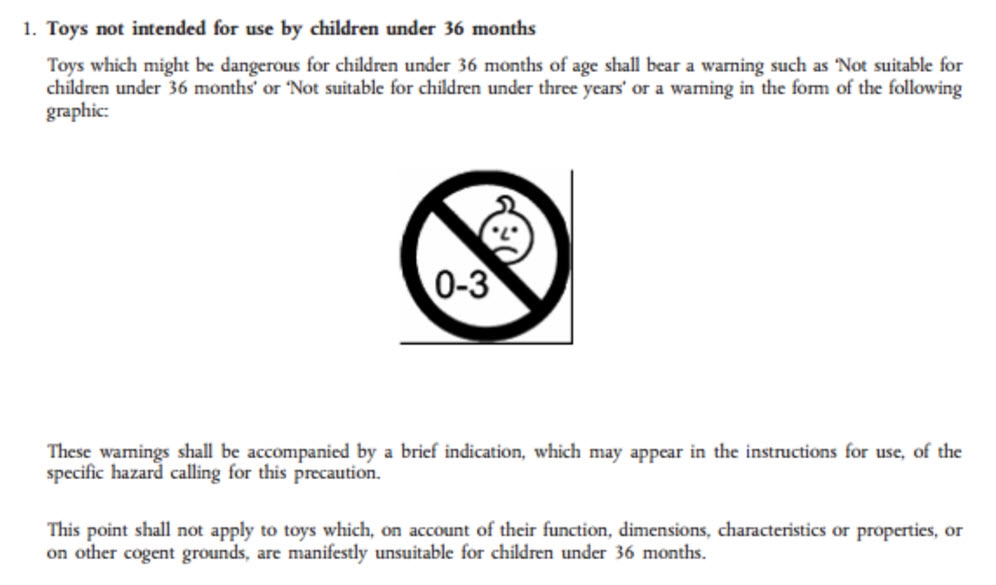EU User Manual Requirements: How to Create Compliant CE User Manuals
01/11/2018 Law & Legislation
Are you interested in selling your product to the European market? In this article, I will show you how to find the EU requirements for user manuals for your specific product group and how to create compliant user manuals for CE marking.
In a step-by-step approach, I will instruct you in the proper ways to create a compliant user manual specifically targeted to the European Union.
Follow these instructions to avoid legal pitfalls and to comply with EU requirements.
How to use the COMPLIAN-CE-Method to achieve EU compliance
Using the method, which I have named the COMPLIAN-CE-Method, will give you the following benefits:
- You will get an idea of how product compliance and product safety in the EU is organised.
- You will know how to find out which products are regulated in the EU.
- Within your company, you will be seen as an expert on European product legislation.
- You know how to identify the EU requirements for user manuals.
- You will know which standards to use for creating user instructions.
- You can develop manuals that are compliant for the European market.
Let’s break it all down into actionable steps.
The 4 steps to using the COMPLIAN-CE-Method to draw up EU compliant manuals
There are four steps that make up the COMPLIAN-CE-Method:
- Determine the directives and the harmonised standards specific to the product.
- Determine the EU requirements for user manuals as specified in the applicable, relevant CE marking product legislation.
- Determine the appropriate harmonised standard to instruct users. The most common of these is: IEC/IEEE 82079-1.
- Draw up the user manual (and other technical documentation) according to the EU requirements.
DO YOU WANT A USER MANUAL TEMPLATE THAT ALREADY CONTAINS THE LEGAL PARTS FOR YOUR PRODUCT?
Take the shortest way to a compliant manual! We have developed a user manual template for machinery, toys, medical devices and electronics that contain all legal content.
Step #1. Determine the EU Directives and the harmonised standards specific to the product
Within the EU, any manufacturer can make use of Europe-specific harmonised standards in order to be in compliance with relevant safety and health specifications. This will enable the manufacturer to attach CE marking. Often these specifications establish requirements and instructions.
To identify the applicable directives and harmonised standards:
- Go to https://ec.europa.eu/growth/single-market/european-standards/harmonised-standards_en (if the URL does not exist any longer, Google ‘harmonised standards’ and try to find the site of the European Commission, starting with ‘ec.europe’.
- Determine which product groups or characteristics apply to your product (e.g. for a battery-powered toy this could be Toy Safety, Electronic compatibility, and RoHS). Write them down on a piece of paper or in an electronic format.
- Click on each product group or characteristic that you have just written down. Find and download the corresponding directive (e.g. click on Toy Safety. Click on Directive 2009/48/EC. Click on the PDF sign in the EN column and PDF row. The download of the English directive begins).
- Go to https://ec.europa.eu/growth/single-market/european-standards/harmonised-standards_en
- Again, click on each product group or characteristic that you have just written down.
- Scroll down until you find the list of harmonised standards.
- Identify which harmonised standards apply to your product.
It may be that you won’t find any relevant directive for your product. In that case, you have a product that is not part of CE marking. Within the EU, any manufacturer can make use of Europe-specific harmonised standards in order to be in compliance with relevant safety and health specifications. This will enable the manufacturer to attach CE marking. Again, often these specifications establish requirements and instructions.
It is important to note that not every product must comply with CE marking and therefore do not need the 'logo'. The fact is that CE marking should only be applied to products specifically denoted by EU harmonisation legislation.
EU legislation that requires the CE mark to be applied to covered products (also known as CE marking harmonisation legislation. See here for more information on how to CE mark a product) covers product groupings such as machinery, telecommunications equipment, medical apparatus, and toys. Legislation has been developed for more than 20 types of products.
In the absence of a CE marking directive, the alternative is General Product Safety Directive (GPSD) 2001/95/EU. The goal of this directive is to ensure the highest possible product safety within the EU. This GPSD has application to any consumer product that is not completely or partially denoted by EU legislation for a specific sector. This includes gymnastics equipment, lighters, outdoor furniture, items for child care, and floating leisure items.
This directive also serves to complement some sector legislation provisions that do not address specific issues including those relating to the obligations of importers and the powers of various authorities. The GPSD’s goals are to provide health and safety to consumers, attempting to keep the EU market free of unsafe consumer products and to permit the smooth operation of the market.
Step #2: Determine all EU requirements for user manuals as specified in the applicable, relevant product legislation
Now that you have an overview of both the mandatory directives and the (voluntary) harmonised standards, study them in order to find the specific EU requirements on the user manual for your product.
To identify the EU requirements from the directives:
- Open all relevant directives.
- Use ctrl + f and type
instructionsto find the EU requirements regarding the instructions.
As an example, the 2009/48/EC Toys Directive gives the following requirement:

To identify the requirements from the harmonised standards:
- Purchase the relevant standard(s).
- Use ctrl + f and type instructions to find the EU requirements regarding the user manual.
Step #3: Determine the appropriate harmonised standard to instruct users. The most commonly used: EN-IEC/IEEE 82079-1:2019
Besides the product-group-specific requirements from the directives and standards, there are also horizontal standards. A horizontal standard does not apply to just one specific product group but contains rules across sectors for almost all branches of the industry. The IEC/IEEE 82079-1:2019 – ‘Preparation of Instructions for Use’ is such a horizontal standard. This concept has a considerable impact on the contents of the standard.
To identify the requirements from the harmonised standard:
- Purchase the IEC/IEEE 82079-1:2019 and fully read and understand the standard.
- Determine which requirements are important for your specific product.
Step #4: Draw up the user manual (and other technical documentation) according to the EU requirements
At this point, we have all the information to make your user manual EU-compliant.
To make your user manual EU compliant:
- Analyse the following gathered information:
- The EU requirements from the directives
- The EU requirements from the harmonised standards
- The EU requirements from the IEC/IEEE 82079-1:2019
- Draw up or optimise your user manual taking the requirements from the directives and harmonised standards into account. These templates for Machinery or Medical Devices may help you.
These videos show the full process visually:
For electrical equipment
For machinery
And for medical devices
Post Conclusion
It is imperative that any manufacturing firm, distributor, and importer confirm that the products you sell are in compliance with all current and applicable safety legislation. Any manufacturer can be deemed liable for damage created by defective products. By making certain that your manufactured products are in compliance with current safety specifications, producers will most likely avoid any liability claims for defects.
All of the specifics for defective product liability are spelt out in Directive 85/374/EEC pertaining to the EU. The purpose of this directive is to establish liability that does not fault producers. Regardless, anytime defective product results in damage to consumers, the producer can be held liable.
This legislation specifically applies to movable product types including agricultural products, consumer products, pharmaceuticals, and electricity.
The information and circumstances that determine whether a product may be defective include:
- Sales literature and other marketing tools
- Written instruction and warnings that are included with the product
- Product use that is reasonably expected
- The point in time that the producer marketed the product
Simply put, the manufacturer will likely be held responsible whenever a product defect is obvious and there is no question that the defect was responsible for the damage.
Any business that either manufactures, distributes or imports from another country is required to ensure that their products are generally safe. The CE marking logo on any product is a declaration by the product’s manufacturing firm that it is in compliance with all existing and applicable legislation.
In the EU, any manufacturer can make use of European harmonised standards in order to maintain compliance with the relevant health and safety specifications spelt out in CE marking directives. This enables the company to apply CE marking. Additionally, many CE marking directives layout specifications for user manuals.
 |
Ferry Vermeulen is a technical communication expert and director at INSTRKTIV. It's Ferry’s mission to create digital user instructions for all products in the world. Listen to the INSTRKTIV podcast on Spotify or read one of his latest blog articles. Linkedin I Spotify I YouTube I Facebook I Twitter |
USER MANUAL TEMPLATE CASE STUDY
See how you can use the User Manual Template to create your own compliant, user-friendly and appealing user manual.